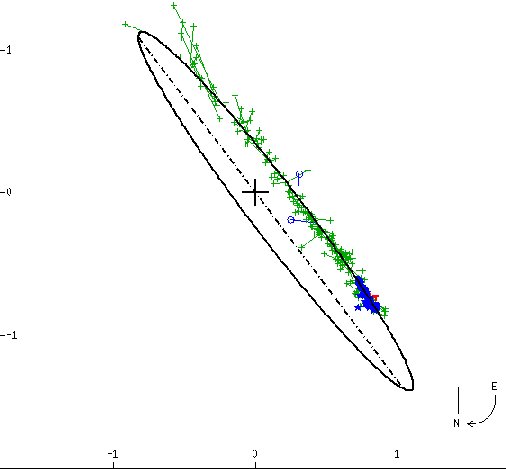
 |
"Elegant" 32 Orionis consists of a B7 dwarf in visual orbit about a hotter B5 version, the two at most just a couple seconds of arc (note the scale) apart. In reality they go around a common center of mass. One has to admire the ability of the old astronomers who measured them near their apparent closest. Only about a third of the 614 year orbit has been covered since William Herschel's discovery, but that is enough to fit a good curve. The orbit, seen nearly edge on, is highly distorted by the tilt and orientation, which places 32 Ori A well off the focus of the apparent ellipse. Given the measured distance of 303 light years, the two average 149 Astronomical Units apart, an eccentricity of 0.22 taking them between 182 and 115 AU from each other. (W. I. Hartkopf and B. D. Mason, Sixth Catalog of Orbits of Visual Binary Stars, US Naval Observatory Double Star Catalog, 2006.) |